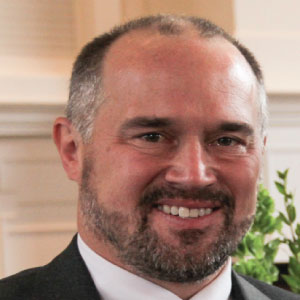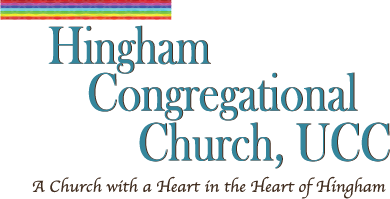
“Signs”
by the Reverend Doctor Peter W. Allen
Hingham Congregational Church, United Church of Christ
Hingham, Massachusetts
December 3, 2017
Mark 13:24-37
You can tell, can’t you, when there is not going to be a baby. And you can tell when there is not going to be one.
No strange cravings. No retching in the bathroom in the morning where pregnancy is the only explanation.
Having a baby — or not having one — means moments of bliss or moments of despair or both — and everyone involved has to be at her or his best in order to be sure everything will be OK. And sometimes, even then, it won’t.
Her belly swells — or it doesn’t — and if the child is a welcome addition to the family, this swelling is a beautiful thing. If not, it is a troubling development and there needs to be a conversation, and if the relationship is a good one, there will be a good decision.
If there is a baby, once our little ones are born and start to grow, there are other signs of the future. When my sons reached age thirteen or fourteen, they had the shadow of a mustache above their upper lip, telling us all that, some day, they would have actual facial hair, telling us that they were on the way to beaming men.
Those of you who have seen my older son, Hank, know that he is a very hairy young man. There is no doubt about his gender identity. But others are different, and there are often signs early on that, even if someone is born with boy parts, he might actually be a she. And vice versa.
Adolescent girls’ bodies change as well, in time, foretelling their future as women. Nowadays, we know not to expect anyone, male or female, to adhere to traditional gender roles, because everyone is different and everyone is beautiful in God’s eyes, whether or not they decide to have children. But there are signs of who they will become, if we are paying attention.
What are some other signs we have of our future?
You are in a class or on a train or in a bar or in church or at a wedding reception and someone looks at you a certain way… And suddenly you think: I just might marry that person!
You are at work, and someone is so cool with you that you know you will never be more than colleagues and that’s OK. And there is someone else whose look tells you that you will soon be fast friends.
There are signs within and on our bodies. A weird pain that won’t go away. A mole that doesn’t look right. And after the appointment with the surgeon, you know, nothing is right.
You are fifty years old and you get up in the morning and you look in the mirror and you say, Who is that?! I am not that old! …Am I?
The answer is yes, you are that old. And the signs on your face in the mirror are true. They do no lie.
And that’s OK! All of us get older. Each of us ages. It is part of being human. And we are all human.
There is a time of day that I think is the most beautiful time, no matter the season. Tracy and I call is longshadows. If you are outside, especially in a place where there are trees, the sun, just before it sets, creates these amazingly extended shadows from the light hitting the trees — crazily long patterns of trunks and limbs and branches on the ground. And it’s painfully beautiful because you know that, soon, these shadows, these artful signs of light and of life, will be gone, and night will come.
Autumn is the same way, isn’t it?
We see blazing oranges and bright yellows and luminous reds in the treetops. We see these amazing colors against the azure sky and wonder if we will ever see anything so lovely again… And then, we remember that these colors are a prelude to winter, the time when life takes a nap, when the leaves will fall and rot, when many creatures, from the huge brown bear to the tiny leopard frog, will move into a state of torpor and sleep through the coldest months of the year, as if they are dead, but they are not.
Signs… of death. Signs of new life. Signs of both, all around us.
When we can’t sleep or when a pet or a family member wakes us up — it ’s maybe five a.m. — and we can’t quite tell, can we, whether it’s still last night or whether the sun is about to rise and fill the world with light. We are so sleepy that we just want to get back under the covers for a little while… And then we hear a bird start to sing back in the woods behind the house. And we know, yes, this is the start of a brand new day. The dog knew it.
Whoever wrote the Gospel of Mark knew that the life and ministry of Jesus foretold a brand new day for his people and for the whole of humanity.
After Paul’s letters, the seven letters that Paul actually wrote, the gospel narratives came next, and Mark was the first to be written. The author of Mark emphasized Jesus’ call to repentance, his focus on the marginalized, and his ministry of healing and of confronting evil.
The author of Mark presents a more down to earth Jesus, one who is less spiritualized than the Jesus in the Gospel of John, for example. Mark’s Jesus cares a lot about people’s every day experience in the world.
All four of the gospels assume that the end of the world as they knew it was near. All four, Matthew, Mark, Luke, and John, have apocalyptic sections.
Apocalyptic means “an uncovering of truth,” especially having to do with the end of the world or the fullness of time. Apocalyptic writing is usually dramatic and employs references to nature and the solar system as places to look for the signs of God’s intentions.
Early Christian writers, speakers, and leaders inherited this imagery from Jewish and pre-Jewish spiritual traditions, so their contemporaries were familiar with it. It was a part of their world view. In the 70’s, in the first century of the Common Era, people in the greater Jerusalem area would also be very aware of the fact that the Romans had destroyed Jerusalem and the Temple and would be feeling as though, yes, the world is coming to an end, at lest the world as we know it.
Some of us might be having the same feelings right now.
So… Mark’s 13th chapter is his apocalyptic section. He names the sun, the moon, the stars, the four winds, and the earth itself as natural entities that will show the future, if we are paying attention. The fig tree, he writes, will tell us when the seasons are changing. The implication is that, if we are mindful of our surroundings, we will know what is in store for us on a larger scale.
The signs of change in Jesus’ day were the presence of the Romans, deep spiritual hunger on the part of the people, and a general restlessness about the state of the world.
In our day, we see signs, too. Political and social polarization, social justice movements becoming more active, women standing up and speaking out about sexual harassment and abuse.
There is a new word that has entered our culture: Woke. Have you heard it? If you re woke, you are aware of what’s going on in your community and world, especially when it comes to social justice issues.
I love this idea of being woke.
There are signs in our own personal lives as well, and in our relationships, that point to the future, for good or ill.
When we are worried about the future — about our health, our country, our planet, our world, remember the message we are receiving from Jesus and from Mark this morning.
The end of the world may not be near, but endings happen all the time, and so do new beginnings.
And God is in the midst of all these endings and beginnings, calling us together into loving community, filling us with hope.
Amen
